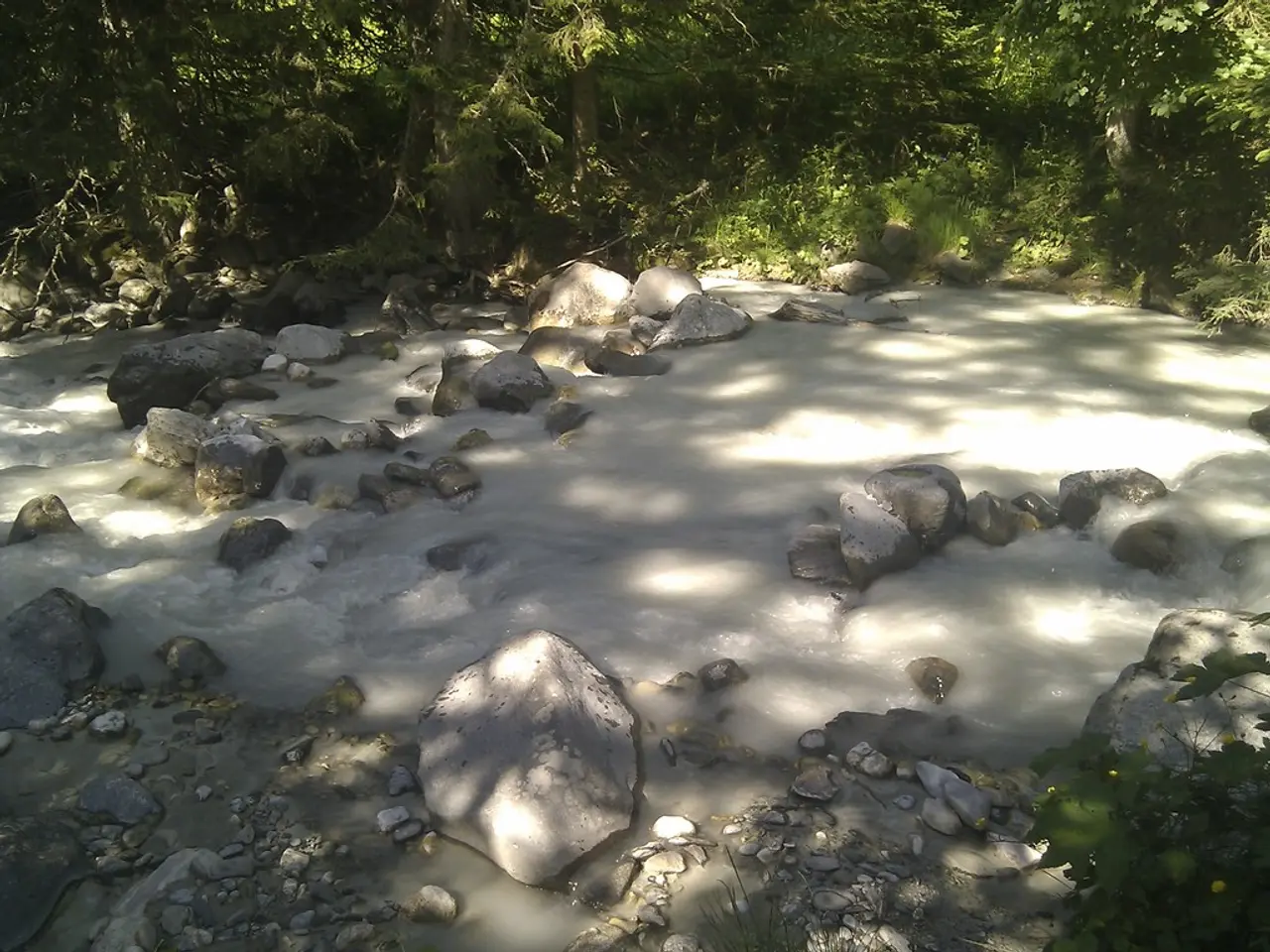Accessing Hydration Naturally: Imperative Methods for Water Acquisition
In various terrestrial and aquatic ecosystems, locating water sources and ensuring their safety is crucial for survival. This article explores natural indicators and methods for finding and purifying water across different environments.
- Vegetation patterns: Lush, green vegetation, water-loving plants such as reeds, willows, or cattails often signal nearby water sources. Submerged aquatic vegetation like seagrasses and macroalgae in coastal and aquatic habitats also indicate water presence and quality.
- Animal presence and behaviour: Species that depend on water during part of their life cycle, such as amphibians, insects with aquatic larval stages, certain bird species, and mammals that require water sources, can guide locating water. The diversity of aquatic biota like fish, mussels, and crabs further reflects water bodies.
- Physical landscape features: Low-lying areas, valleys, depressions, or natural channels often collect water. Soil moisture, wetland formation, and soil types rich in clay or organic matter can indicate water availability.
- Chemical and physical water indicators: Specific chemical signatures and physical factors in water itself, such as temperature, pH, flow conditions, oxygen levels, characterize and help distinguish water sources and their quality.
- Environmental signals after disturbances: Changes following events like wildfires can alter water runoff, sediment erosion, and water chemistry, signaling impacts on water availability and quality downstream.
- Long-term ecological monitoring indicators: Resource managers use measurable indicators like benthic macroinvertebrates, bird populations near water bodies, fish species integrity, and aquatic vegetation coverage to track water ecosystem health and changes over time.
Utilising these natural indicators, one can assess the location, quality, and sustainability of water sources across different ecosystems, supporting management and conservation efforts.
When it comes to collecting and purifying water, several methods are available:
- Absorbent materials: Using absorbent materials like sponges or chamois can optimise the collection of dew or frost from vegetation.
- Boiling: Boiling is one of the simplest and most effective methods for purifying rainwater, effectively killing pathogens, bacteria, and viruses.
- Transpiration bags: A transpiration bag involves enclosing leafy branches in clear plastic bags, allowing the natural process of transpiration to collect moisture.
- Portable filtration systems: Portable filtration systems have revolutionised how we purify water in the wilderness.
- Ultraviolet (UV) light purification: UV light purification has emerged as a highly effective method for disinfecting water.
- Chemical treatments: Chemical treatments can be used to disinfect rainwater, particularly when concerns about contaminants exist.
- Solar still: Constructing a solar still is an ingenious method to extract water from the ground or plant materials by harnessing the sun's heat.
- Rainwater storage systems: Implementing rainwater storage systems like barrels, cisterns, or underground tanks can enhance long-term water availability.
- Collecting dew: Collecting dew in the early morning before sun exposure maximises yield.
- Regular maintenance: Regularly check storage containers for signs of contamination or algae and clean them as needed to ensure safe drinking water.
In arid regions like the Sahara Desert, the acacia tree is known to grow near groundwater, serving as a vital resource for both wildlife and human populations. In regions like Africa, elephants are known for digging into riverbeds to access underground water during dry seasons. Water-carved rocks or smooth, rounded stones suggest the historical presence of flowing water.
Natural springs are a treasure trove for those seeking water, often providing a reliable source that requires minimal effort to access. Underground water is often present beneath the surface in dry riverbeds or low-lying areas. Certain mineral deposits found within rock formations can indicate the presence of water.
In numerous ecosystems, specific plants such as willows, alders, and certain types of ferns flourish near water sources. Utilizing vegetation for water collection is both a sustainable and practical approach. The presence of dense, thriving plant life often leads to streams, ponds, or underground water.
In regions with regular rainfall, harvesting rainwater is one of the most efficient methods of collecting water. Storing rainwater in a cool, dark place is essential to prevent bacterial growth. Various medicinal plants, especially those utilized in traditional medicine throughout the Amazon rainforest, typically grow in proximity to water.
In conclusion, understanding natural indicators and employing effective methods for finding and purifying water can significantly improve one's chances of survival in various ecosystems. Whether in the wilderness or urban settings, being prepared and knowledgeable about water sources and their indicators is essential for maintaining health and well-being.
- Acacia tree: Acacia trees in arid regions like the Sahara Desert can lead to groundwater, offering vital resources for both wildlife and human populations.
- Elephants' digging: Elephants in Africa often dig into riverbeds during dry seasons, showing the potential presence of underground water sources.
- Water-carved rocks: Water-carved rocks or smooth, rounded stones indicate historical flowing water in environments.
- Natural springs: Natural springs provide reliable and less effort-required water sources in numerous ecosystems.
- Mineral deposits: Certain mineral deposits within rock formations can indicate the presence of underground water.
- Water-flourishing plants: Specific plants, such as willows, alders, and certain types of ferns, thrive near water sources, offering a sustainable and practical water collection method.
- Rainwater harvesting: In areas with regular rainfall, collecting and storing rainwater is an efficient water collection method.
- Medicinal plants near water: Various medicinal plants, including those used in traditional medicine throughout the Amazon rainforest, typically grow near water sources, highlighting their proximity.
- Science and water: Environmental science determines natural indicators and methods for finding and purifying water, while medical-conditions research ensures safe drinking water in diverse ecosystems and relevant health-and-wellness concerns.
- Resilience and water: Water resourcefulness and resilience can significantly increase the chance of survival in various ecosystems, applicable to both wilderness and urban settings.




